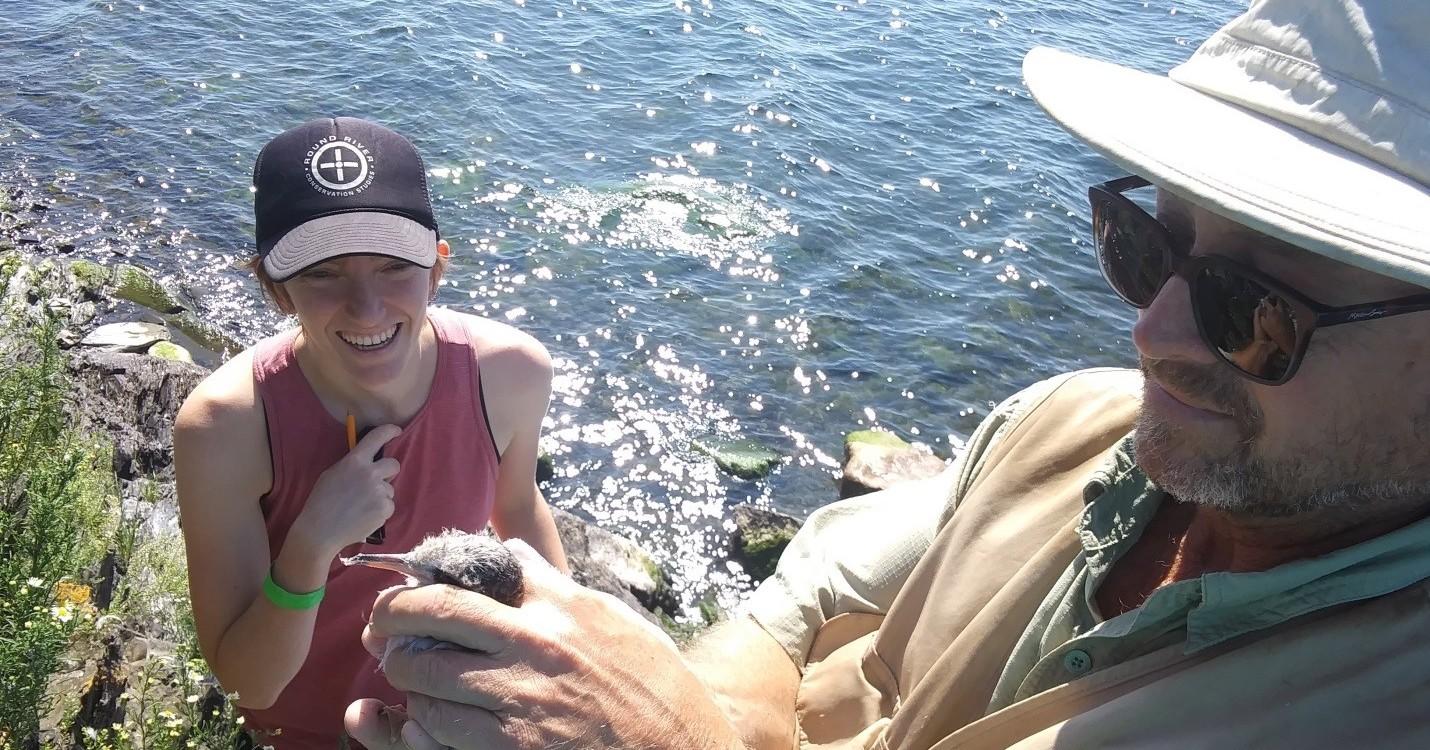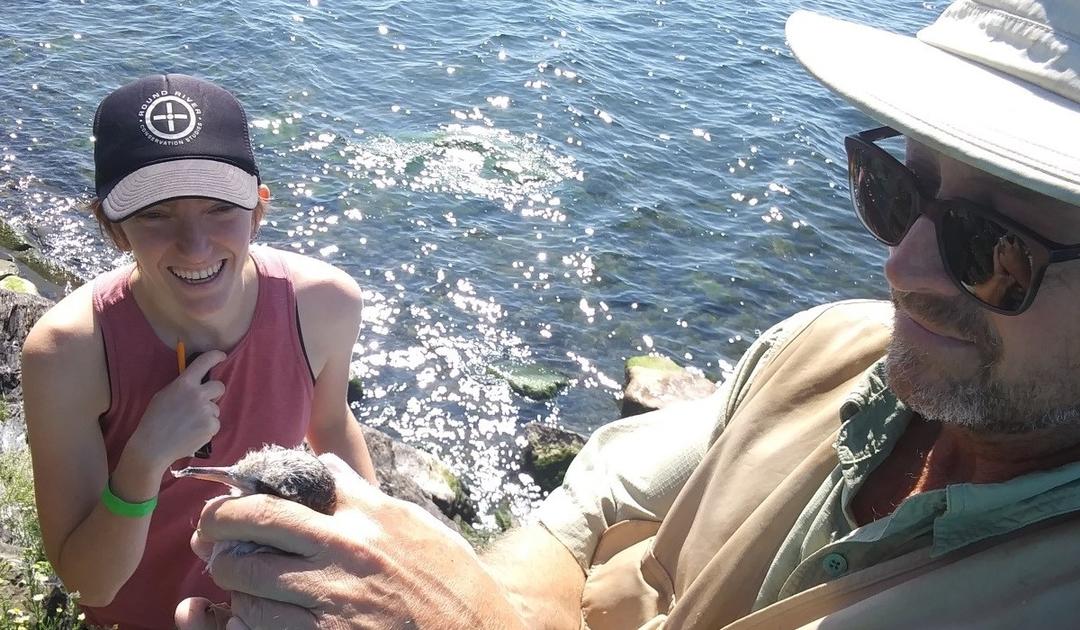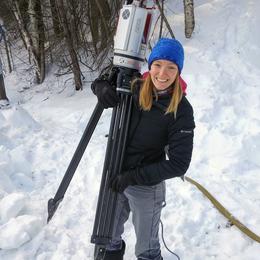Hannah Weiss is Audubon Vermont’s UVM Conservation Education Fellow for 2019, a position which involves broad participation in the organization’s many conservation and nature education initiatives. These articles are part of a series of “field notes” pieces, written to give the community a fellow’s-eye view of the exciting and important work being done by Audubon Vermont every day.
On a Thursday in late August, Mark, my mother, and I drive to a dock in North Hero, board the Audubon motorboat, and set out to check on Lake Champlain’s only Common Tern colony. Bright blue skies promise clear weather for our excursion but we keep our eyes on ominous thunderheads obscuring the tops of the Adirondacks to the west.
Mark LaBarr, one of Audubon Vermont’s conservation biologists, has monitored and protected the Common Tern colony on Lake Champlain for the last 20 years. Every summer he boats out once a week while terns are laying, incubating, and then hatching eggs. He counts eggs quickly to avoid disturbing nesting parents. Later in the season, he counts hatched chicks and notes abandoned nests. Common Terns are endangered in Vermont – and due to Mark’s work, the number of breeding pairs has more than doubled during his 20 years.
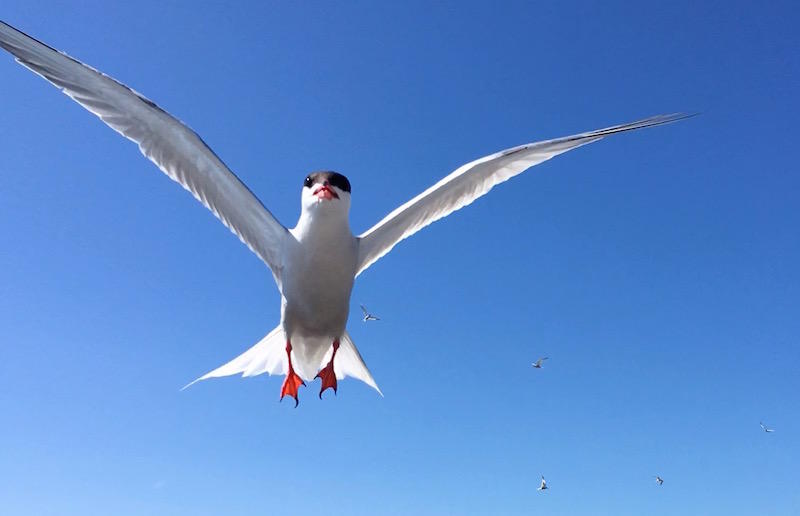
Mark seems at ease at the bow of the boat, one hand on the steering wheel as we speed towards Popasquash Island. This is our third trip together, and one of the last trips of the season. Common Tern chicks, he tells me, should be fledged at this point in late August and not waiting in nests for their parents. This transition makes it difficult for us to count them, which make trips out to the island less productive. My mother, an Earth Science professor at a college in Massachusetts, is up visiting and joins us for this survey.
The island comes into view. It’s about as big as someone’s large living room. Thin, cracked pieces of uplifted Iberville Shale provide enough texture for common weeds and grasses to take root. This vegetation provides the shelter for many Common Tern nests, but it also adds a level of distress for us humans – sometimes nests are very well-hidden in the tall grasses and the “crunch” of the shale can sound very similar to the “crunch” of stepping on tern eggs.
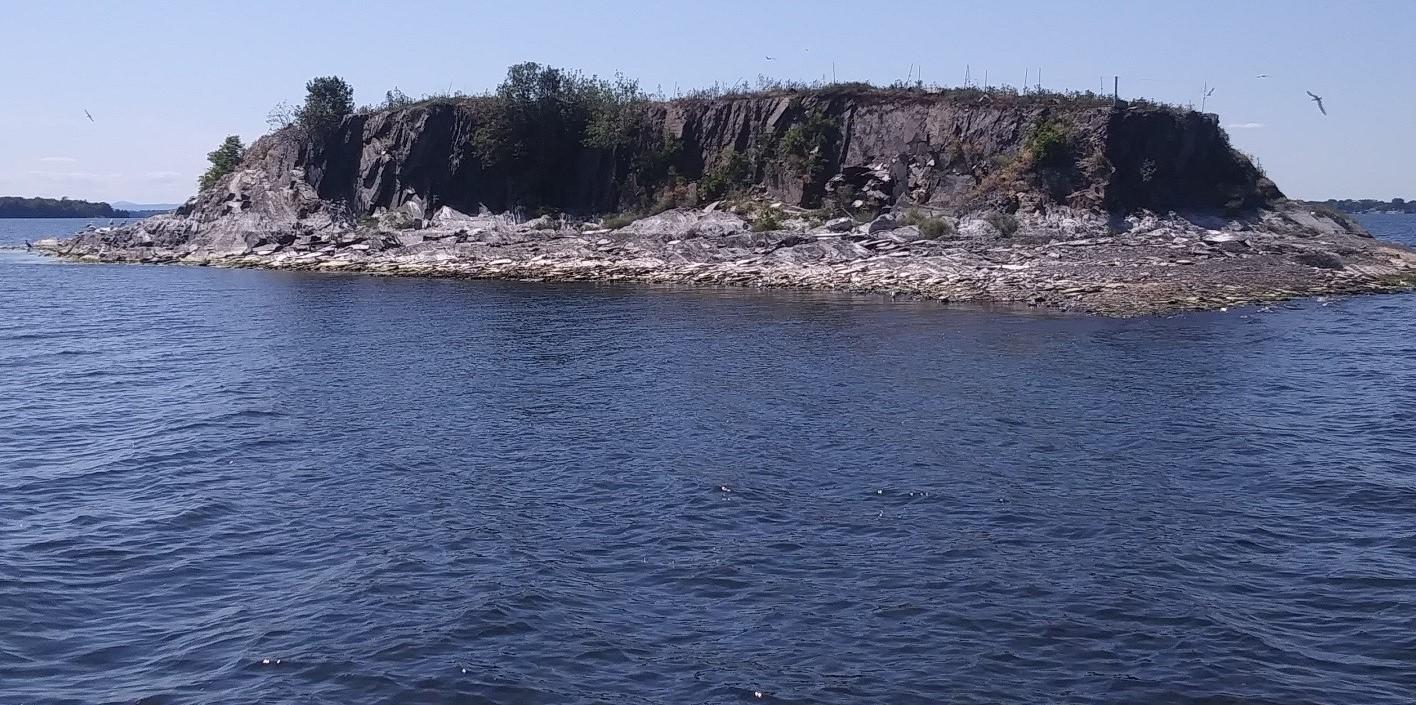
Popasquash Island is ringed by Audubon buoys to deter curious tourists and people fishing. Mark kills the motor as we near the north shore and lets the boat float in. Once the boat is close enough, Mark takes out his binoculars and points towards a large group of Common Terns close to the shore to get a count of fledged chicks.
“Thirty-three” he states. I’m amazed he can distinguish the chicks at this distance and with the chaos of birds calling and moving around. We head towards another side of the island to count a group of terns. In total, he counts a little under one hundred fledged Common Tern chicks.
We dock the boat and make our way across the guano-spattered sheets of shale. At this point, Mark tells us, tern chicks could be hiding on ledges instead of in their nests, so we train our eyes around the rim of the island. We don’t find any and clamber up an accessible cliff to the top of the island.
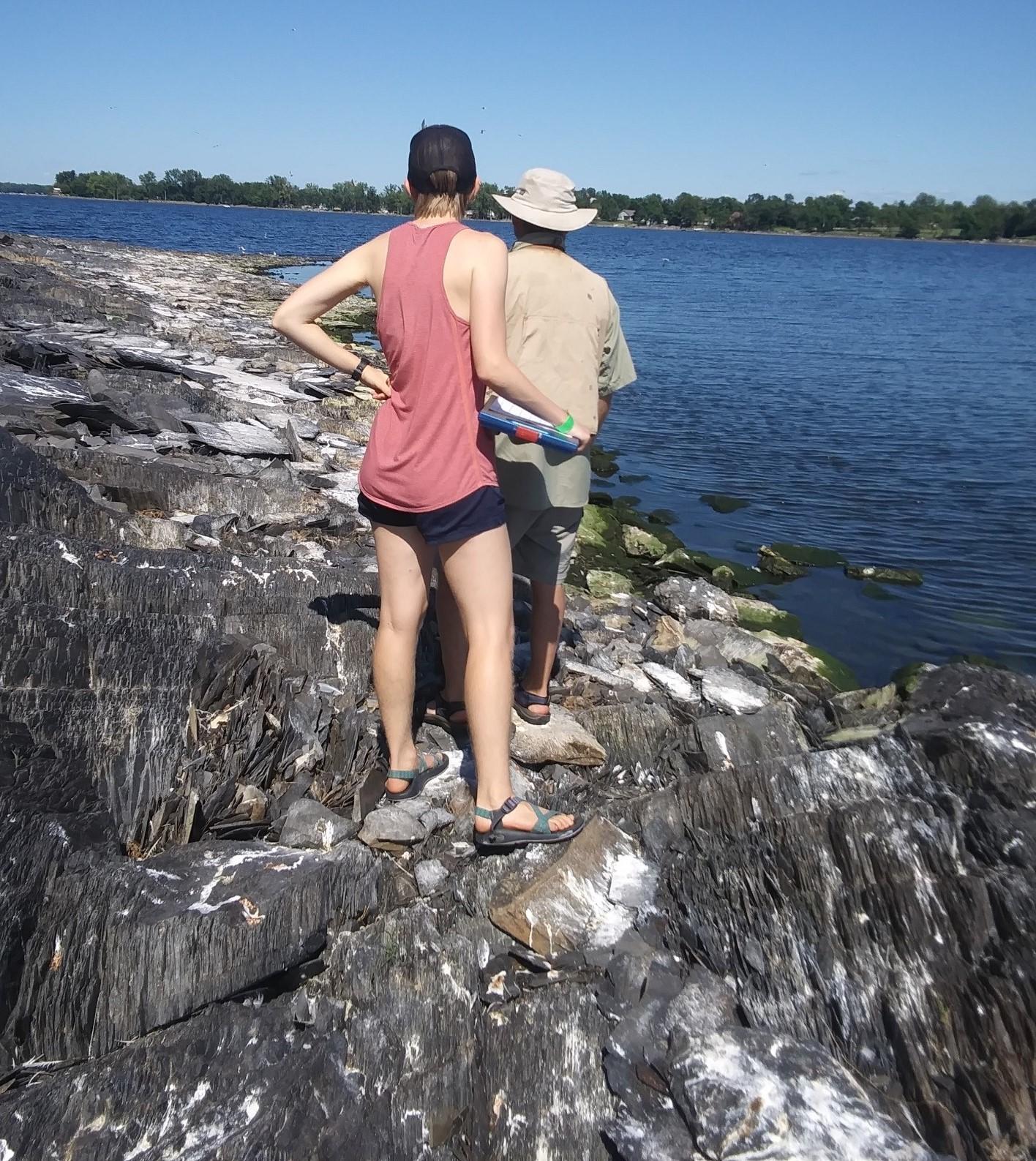
Scattered across the northern, southern, and western tips of the island are wooden “tents” that Mark has made and brought to the island to provide shade and protection for the chicks. In his quest to protect this species, he has also strung electric fences around the island to deter their main predator, the Great Horned Owl. This predator lands on the island and then walks around, eating chicks. Mark’s hope is that if they hit the electric fence, they’ll get such a shock that they’ll leave immediately. The fence won’t hurt the terns because the shock only works if the individual is grounded. The fence is too high for the terns to accidently bump it while walking and it won’t shock them if they bump it on the wing.
I am armed with my clipboard and pencil. Together, the three of us move across the island like a strange caterpillar – I walk in Mark’s footsteps and my mom walks in mine, careful to place our feet only in places without vegetation. We check old nests, typically just circular cleared spaces with a small amount of debris ringing the outside, and we immediately find a chick hiding under a wooden tent. It’s larger than the chicks we’ve found in the past that have fit in our palm of our hands. This one is almost full-sized, yet still has some of its junior plumage. Mark picks it up to check if it has been banded. It has not.
Mark is a professionally-trained bird bander (learn more about Mark’s bird-banding), so he removes a small silver band from a chain, pulls out a pair of pliers, and fits the bird with a unique identification number. He returns the bird under the tent and we move on across the island. We find two more chicks beneath tents while their parents scold us from above.
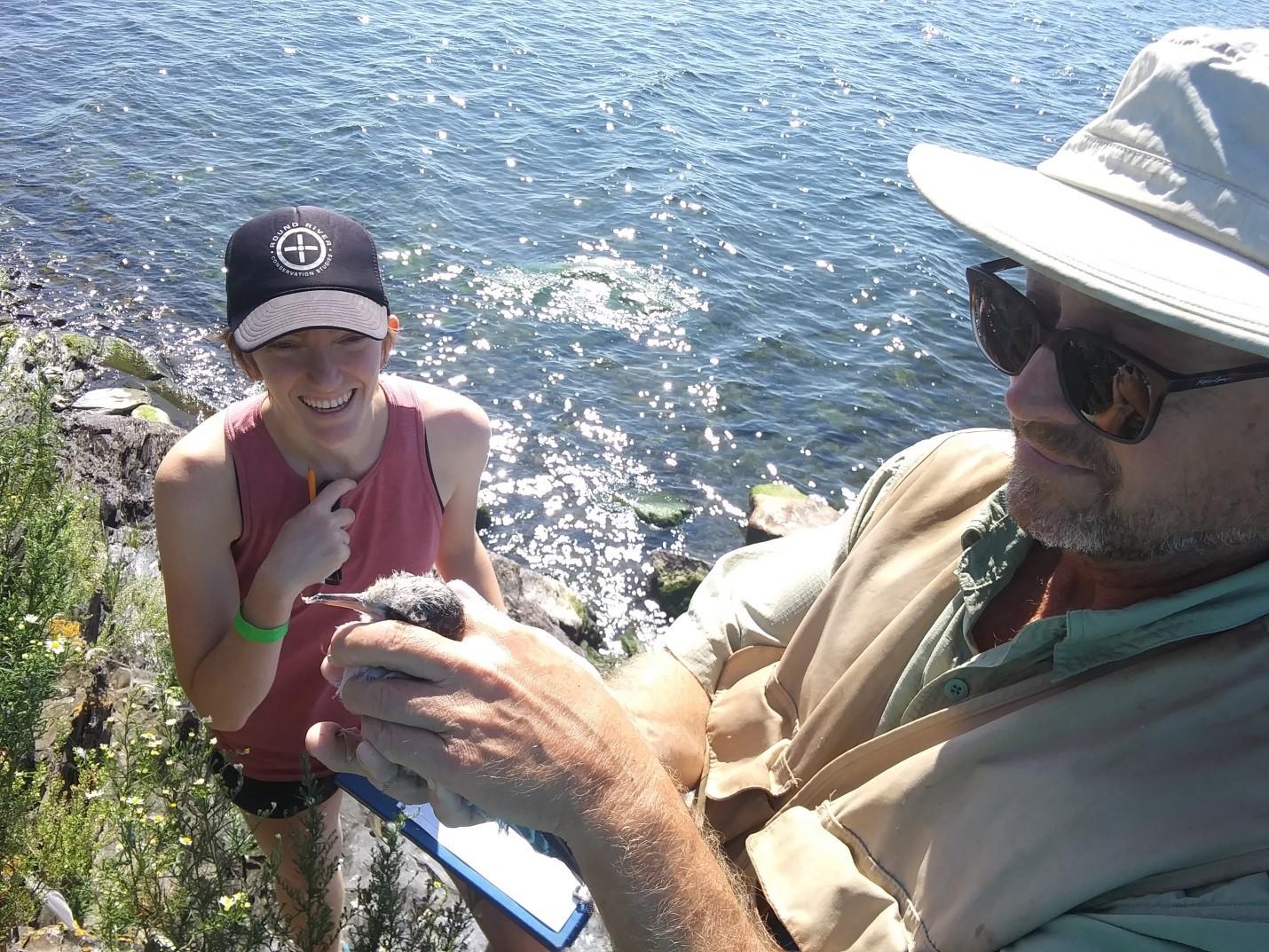
We’re lucky, Mark tells us, that it’s late in the season; this means we don’t need hard hats today. Part of the data-collection process is usually the dull thud of birds’ beaks glancing off the plastic construction hat.
Mark notices a particularly vocal Common Tern towards one corner of the island. This level of agitation usually means it’s a parent with a chick nearby, yet as we search through the grasses we can’t find the chick. This bothers Mark. He knows one is nearby, but I can’t write anything down and he can’t band it unless we’re able to find it.
After checking the other sides of the island, we drop down to the lower rim of shale around the island to do more cliff searching. Mark makes a beeline for the area with the angry parent, determined to find this chick. My mom and I follow, noticing the guano trails that he is following. We scale the craggy cliffs around the island until Mark calls out, “I see a bird butt!” I look to where he is pointing, and see a Common Tern chick that’s wedged itself into a crevice. It feels like we’ve struck gold.
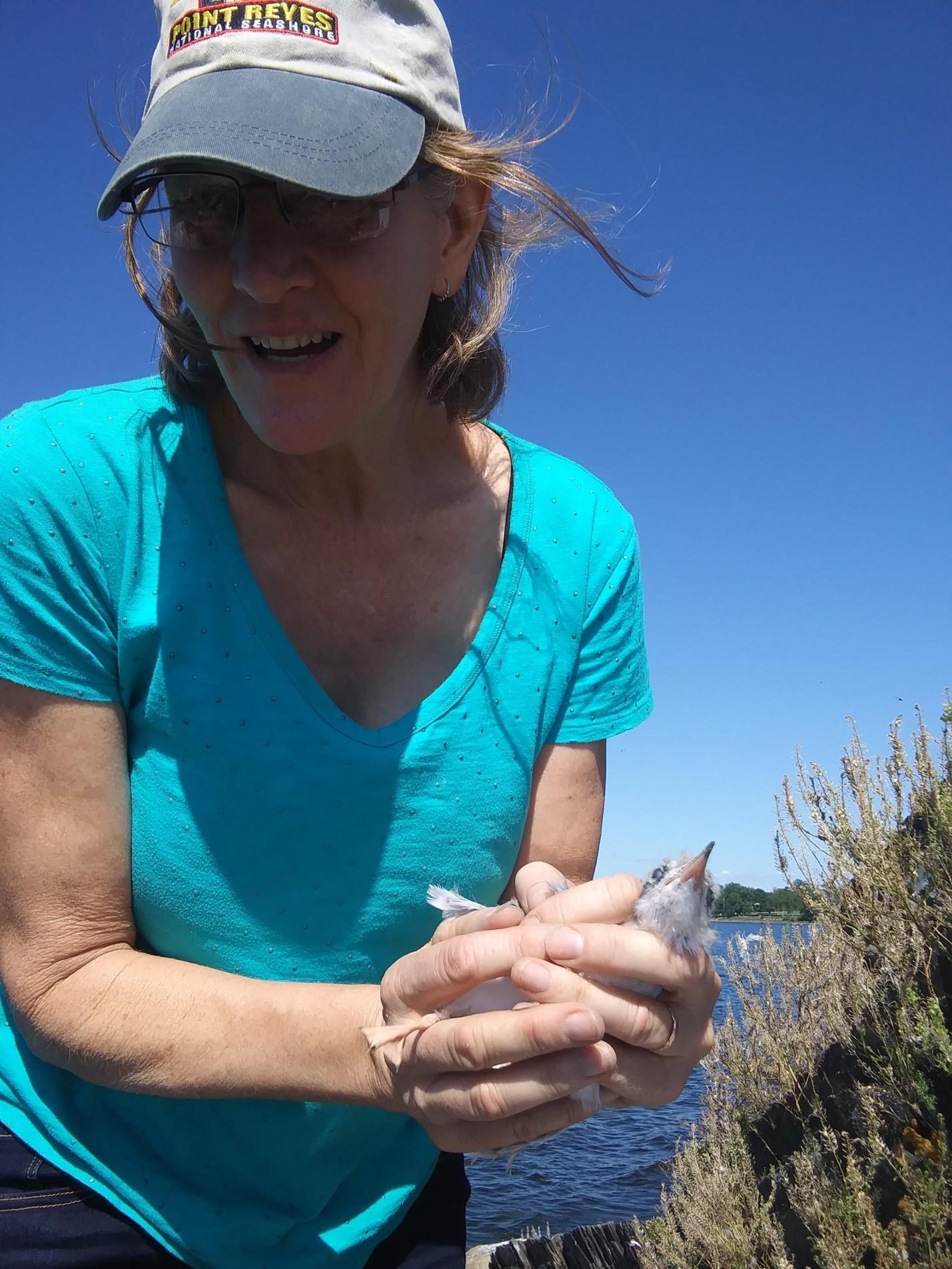
Mark removes the chick and places a silver band around its ankle. He hands it to mom to hold – it’s an amazing experience to hold a bird. We release the chick and head back to the boat. Though we only found four fledglings, Mark counts that as a success. We board the boat to head back.
On our first trip out to the island, I asked if other Lake Champlain islands supported Common Tern colonies. This year, Popasquash Island is the only one with a nesting colony, but in years past Grammas and Rock Islands both supported Common Tern colonies. Mark decides to tour us around to check on these islands and we speed south.
Both of these islands look similar to Popasquash. “Why aren’t there colonies here?” mom asks. “Black-Crowned Night Herons moved in and they prey on the terns.” It seems like some predatory birds were the main driver of abandonment of the islands.
We speed around other islands that Mark names easily: Butler Island, Night Island, and Woods Island. He tells a story of a man winning one of these islands in a poker tournament back in the early 1900’s. Audubon Vermont owns Popasquash Island; others are owned by a variety of people or organizations. Some are Vermont State Parks that you can even camp on.
We finish the day around 4pm, luckily without any traces of storms. Though the tern season is over, Mark will continue heading out the following summers to monitor, record, and protect Common Terns on Lake Champlain.
Learn more about the Common Tern Recovery Project: https://vt.audubon.org/tern

